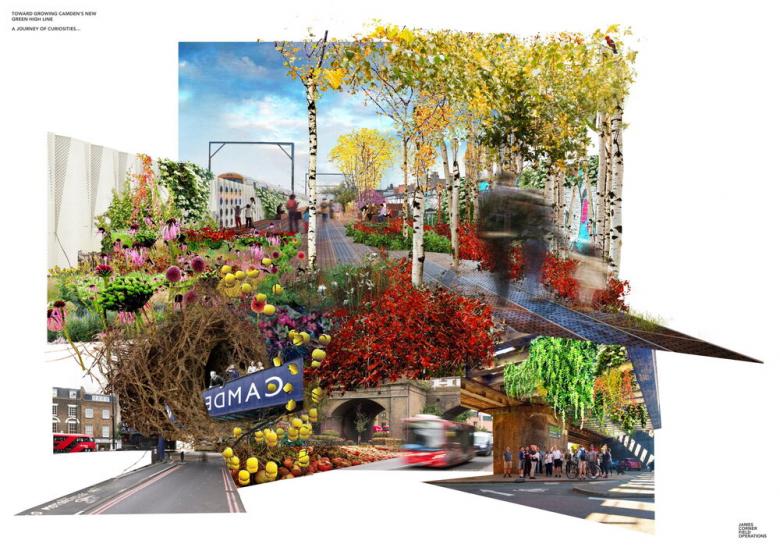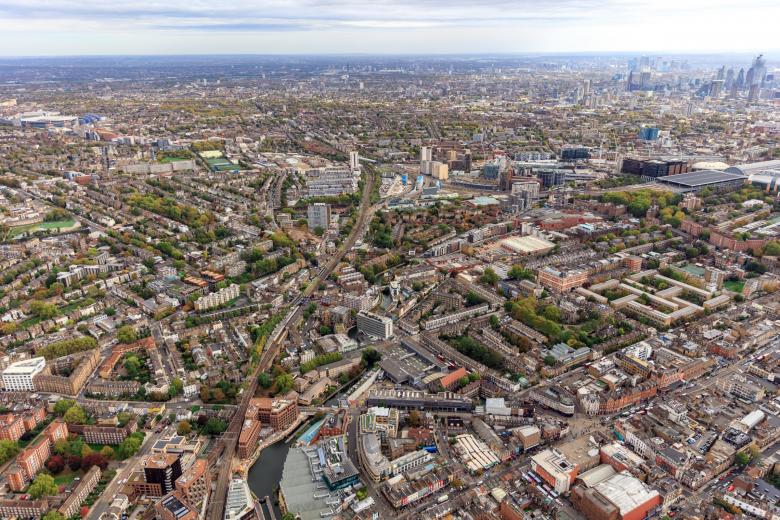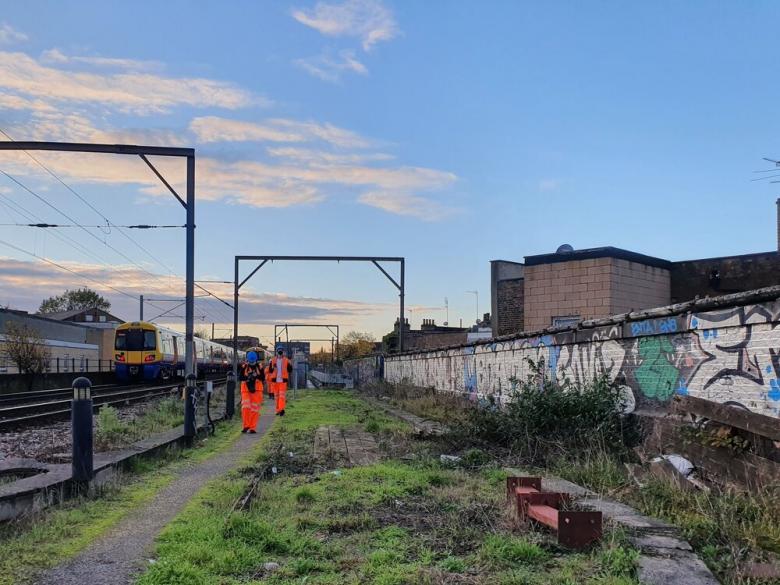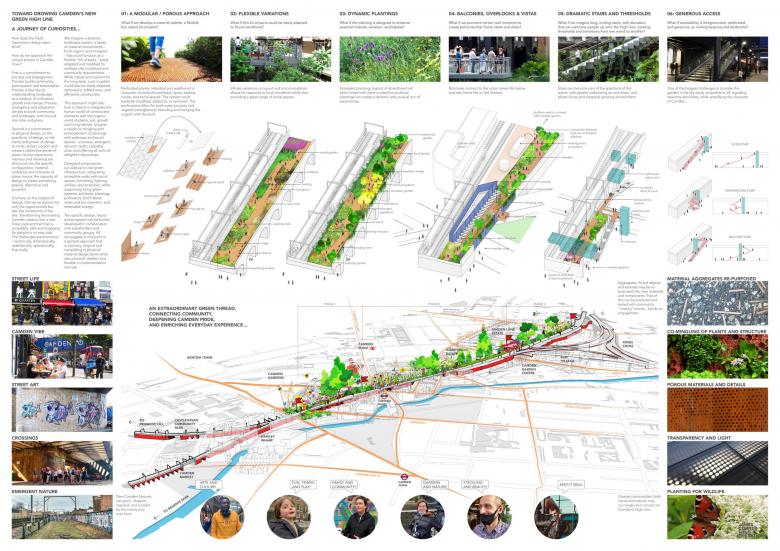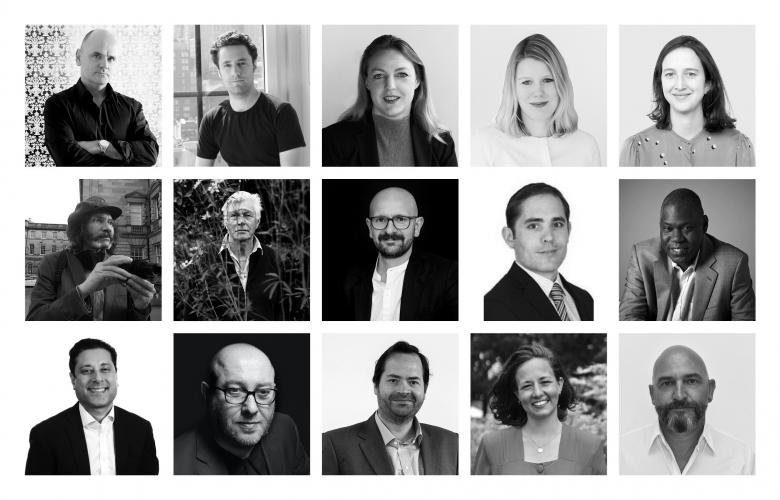Field Operations Wins Camden Highline Competition
James Corner Field Operations, Stage 2 Submission. (Image courtesy of Camden Highline)
A team led by James Corner Field Operations, the landscape architecture firm behind New York's High Line, has won the competition to transform an unused railway in London into the Camden Highline.
We first learned about the Camden Highline in 2017, when plans were unveiled for a temporary park to be built on the roughly one-mile section of railway between Camden and King's Cross. That year saw the creation of Camden Town Unlimited, a business improvement district focused on the long-term realization of the Camden Highline project. Although it appears that nothing came about from the 2017 competition, the Camden Highline website asserts that the charity has "completed feasibility work that shows the project is technically and financially possible, the cost is an achievable amount to raise, and there is a viable business model." Its form will be dictated by the Field Operations team, with the project being seen as "a positive example of London’s post-Covid recovery."
Camden Highline Aerial View, East. (Photo courtesy of Camden Highline)
The existing conditions of the old railway, as revealed in photos like the one below, hint at its similarities and differences with the High Line in New York City, the most obvious precedent for the project. Much like a "self-sown" park sprung upon the High Line's old railway viaduct in the years after it closed to rail traffic, landscape has taken hold on parts of the Camden structure, inviting its transition into a pedestrian park. And like the High Line, which was constructed with the knowledge that it could potentially turn back into a working railway in the future, the Camden Highline would have the same "temporary" designation, dependent upon Network Rail's needs. The biggest difference between the two projects is the fact the Camden Highline parallels operational tracks, which the new park will be separated from by a fence — complete with "trainspotting windows" — when it opens in 2024 or thereabouts.
2020 site visit. (Photo courtesy of Camden Highline)
The team led by James Corner Field Operations bested four other finalists in the two-stage competition that saw 76 entries in its first round. Similar to the High Line, the winning design is based on a "flexible 'kit-of-parts'" adaptable to different site conditions and the design's evolution as the team gains community input in the project's next phase. The parts include modular planks for the walking surface, planting areas, occasional overlooks, and the stairs and elevators needed to provide access to the elevated park.
James Corner said in a press release: "Camden is such an extraordinary place, a vibrant, hip, and diverse community that will soon enjoy an amazingly unique, public green thread that ties its various communities together in ways both revelatory and transformative. We could not be more excited to work with residents and stakeholders to create a one-of-a-kind elevated park along the viaduct that speaks to the magical symbiosis of nature, culture, arts, and community."
James Corner Field Operations, Stage 2 Submission. (Image courtesy of Camden Highline)
The Design Team:- James Corner Field Operations (design lead)
- vPPR Architects
- Piet Oudolf
- Hew Locke
- Street Space
- Speirs Major
- Tony Gee Engineering
- AKT II
- Rider Levett Bucknall
- Atelier Ten
- Pentagram
- Authentic Futures
The design team. (Image courtesy of Camden Highline)
The Jury Panel:- Richard Terry, Structural Engineer and Chair of Camden Highline
- Alison Brooks, Principal Alison Brooks Architects, Good Growth by Design Advocate to the Mayor of London and Trustee of Open City
- Wayne Hemingway, Hemingway Design, Good Growth by Design Advocate to the Mayor of London
- Edward Jarvis, Urban Design Manager, London Borough of Camden
- Indy Johar, Architect and Good Growth by Design Advocate to the Mayor of London
- Kathryn Moore, Past President of the International Federation of Landscape Architects, Member of the HS2 Design Review Panel and Professor of Landscape Architecture at Birmingham City University
